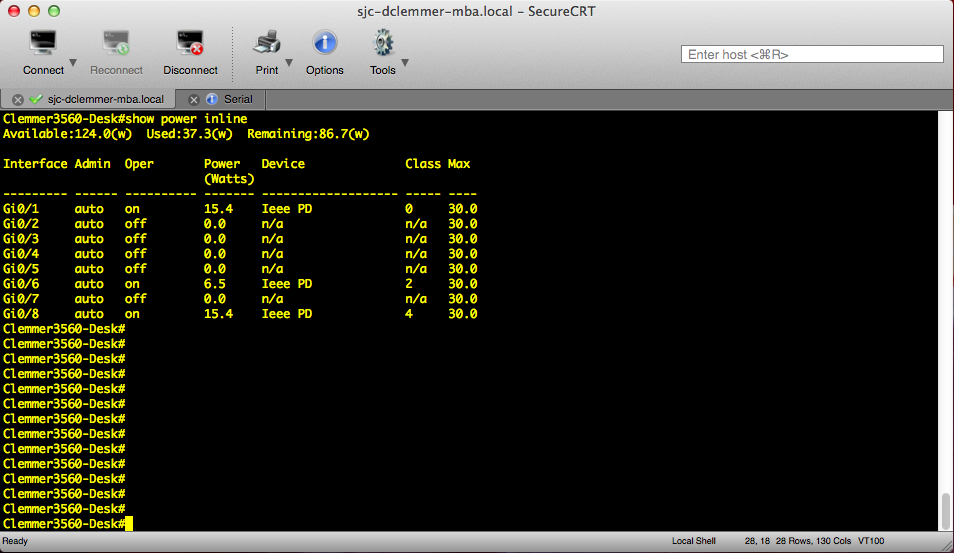A few months back, there was a conversation on twitter started by @WiFivomFranMan raising the issue of less than expected performance when testing the Aruba AP225 along with 802.11ac clients. At the time, I did not have my hands on an AP220 to test with myself, but indications seemed to suggest that the Cisco 3560CG-8 that Kevin was using to provide POE power to his test AP225, was not providing more than 802.3af power. Having finally gotten my hands on an AP224 for my own testing, I’ll dig into this deeper.
I’m using a Cisco Catalyst 3560-8PC-S to provide 802.3at POE to my test APs. As an 802.3af power source, I haven’t had any issues with it. Booting up the AP224 while connected to the Cisco 3560CG, the following output was shown on the AP console:
The highlighted row showing POE as only 802.3af is what got my attention. Further, showing power stats from the 3560CG also matched up to this:
When connecting the AP224 directly to an Aruba S2500-48, instead of seeing the statement with 802.3af power, the AP correctly reports 802.3at power:
What’s the difference between the 3560CG-8 and the S2500-48? My first thought took my back to pre-standard POE and experiences with Cisco equipment leveraging CDP to signal things like POE or voice VLAN. The Aruba S2500 doesn’t support CDP, but does use LLDP instead. Great! The Cisco 3560CG-8 also supports LLDP, but as I found it’s not enabled by default. This is verified by running “show lldp neighbors”, which will respond with “% LLDP is not enabled”.
Running the configuration command “lldp run” globally enabled LLDP on the switch, and started advertising LLDP on all interfaces. With LLDP running, the AP224 correctly reports 802.3at power as well as the switch port showing the higher power draw:
So that’s all it was, enabling LLDP on the Catalyst 3560CG-8 provides the necessary signalling for enabling 802.3at power to an Aruba Access Point.





You must be logged in to post a comment.